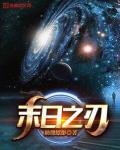Chapter 261: Confrontation Everywhere
22 years, February 15th.
Zhu territory.
Qilang Town in the central part of the country.
After more than half a month of training, Ruth found his family who had been relocated to Zhuyu through the channels of the Ministry of Internal Affairs, and he applied to be transferred to Zhuyu.
Through secret channels that traveled at night and hid during the day, Tru and a dozen other recruits assigned to Zhuyu finally arrived at Qilang Town.
This small town looks ordinary when viewed from outer space.
But in fact, Qilang Town is just the surface. The real city is actually in the mountains on the east side of Qilang Town. Under these mountains with an average height of two to three thousand meters, the Qilang base city is hidden.
The scale of Chilang Base City is very large, especially with the recent large-scale expansion. Eight sub-districts have been built, which can accommodate a total population of 73,000.
In the future, the scale of this area will continue to expand until it forms an underground base complex that can accommodate 200,000 to 300,000 people.
Ruth and his group entered the traffic station in Qilang Town exhausted. After identifying themselves, they were taken to a lounge.
After the station manager verified their identities, he took them to an elevator reserved for internal staff.
The elevator descended hundreds of meters before reaching the underground station below the transportation station.
Twenty minutes later, the electric train slowly stopped at Qilang Town Station and the carriage doors opened automatically.
At this moment, the station manager's communicator rang. He picked it up and took a look, then quickly asked the electric train to wait for five minutes.
Another group of people got off the elevator.
Ruth sat in his seat, curiously looking at the group of people who had just come down. Judging from the uniforms they were wearing, he knew through the reminder of the mobile phone wizard that these people were technical employees.
The group of people also got on the bus quickly.
The train started and headed towards Area 1 of Qilang Base City.
Ruth was a little homesick and kept looking around.
Weng Xuehai, who was sitting opposite him, glanced at him and continued to look through the geological exploration data on the tablet. He came to the Qilang Base City this time not to wander around, but because there were new discoveries here.
Recently, their geological survey department is one of the busiest departments.
Due to the construction of a large number of underground bases, the Assam branch has been digging tunnels and shafts underground as a daily routine.
This also led to the Assam division inadvertently digging up a large amount of mineral resources.
For example, the large bornite mines in Manipur, the Shillong lithium mines and Dura tungsten mines in Meghalaya, and the gold and lead mines in the Zhemongxiong area.
These minerals have one characteristic in common: they are often buried below 500 meters underground, and are surrounded by either deep mountains and forests or snowy plateaus.
For example, the mine was discovered in the Qilang base city, above a mountain with an altitude of 1,736 meters, and the excavation area is about .
While Weng Xuehai was concentrating on looking up information, the train also arrived at the Area 1 station in Qilang Base City.
Root and others went to report to the local branch of the Ministry of Defense.
Weng Xuehai and his team met with the head of the geological department of Qilang Base City.
Soon they took a train to Area 9 where the minerals were discovered, which was also a newly developed area.
Arriving at the excavation site, Weng Xuehai looked at the corroded rock section and quickly ordered: "Collect samples ."
Several assistants skillfully opened the tool boxes they carried with them and began to conduct fixed-point sampling of the rock strata and excavated mud and sand.
Deputy team leader Ba Kang picked up a palm-sized piece of black rock and said, "This is a typical magnetite ore, and the grade is not low."
"Magnetite from magmatic metamorphic rocks is usually accompanied by other metals," said Weng Xuehai as he inserted a test tube of mud into a portable mass spectrometer.
After a while, the mass spectrometer combined with biocomputer technology analyzed the elemental composition of the mud and sand.
"The grade of magnetite is really good, reaching 47% in this sample."
Bacon looked at the list of detected elements: "Huh? The content of platinum and rhodium is very high, and there are also large amounts of manganese and chromium."
Weng Xuehai then tested mineral samples from other locations and found that the average grade of magnetite was about 42-48%, which is a typical rich ore.
However, for this kind of iron ore with a lot of associated minerals, it is necessary to prepare equipment to separate the associated minerals when mining.
Since they were underground, they could only conduct secondary drilling in all directions based on the direction of the tunnels and veins.
However, based on past experience, Weng Xuehai can basically be sure that the reserves of this composite magnetite will not be less than 120 million tons.
In fact, the mineral resources currently controlled by the Intelligent Company are no longer what they used to be.
Taking iron ore as an example, the total reserves of iron ore in the area controlled by Zhiren Company have reached 5.37 billion tons, and the average grade is about 28.4%.
The reserves of other minerals are also increasing.
In fact, as long as we can explore downwards, there are still abundant mineral resources deep in the earth's crust, so there is no need to worry too much.
For example, there have been major problems in the recent iron ore trade between Australia and Hongsavadi. Australia's three major iron ore suppliers have collectively raised the price of iron ore exported to Hongsavadi by 30-40%.
In response, Hongsavady has stopped importing iron ore and turned to mining its own reserves.
It is precisely because of this kind of precautionary preparation that Australia's three major iron ore suppliers not only failed to reap the benefits of Hongsavadi Steel, but also caused the international iron ore futures prices to plummet.
After all, Hongsavady is now one of the top an annual output of 47 million tons of steel.
If we add Luzon's 7.3 million tons of steel production capacity and Siam's 2.1 million tons of steel production capacity, the total steel output of the Sapiens Company is already quite large.
Australia's three major iron ore suppliers had their plans in place, but they underestimated the preparations of Homo Sapiens.
As for these Australians, Sapiens Company has never regarded them as a stable factor, but as an unstable factor that can be removed at any time.
In this iron ore confrontation, Zhiren Company made a small profit in the futures market and at the same time shorted the stocks of a number of iron ore suppliers.
The outside world had already overestimated Hong Shawadi, but unexpectedly it was still underestimated.
Hongsavadi can rely on its own iron ore reserves and refuse to purchase Australian iron ore. This is a demonstration of its strength.
At least it is difficult for other steel producing countries to get rid of the blackmail of Australian iron ore. In this regard, Hongsavadi Steel Company has gained a great advantage.
After seeing the Australians' behavior, the Sapiens Company further increased its exploration efforts in the controlled areas, striving to achieve self-sufficiency in all minerals.
This is also the reason why Li Qingye directly denied the lithium battery route when Qingye Group was planning the automobile industry.
If you want to make electric cars with lithium batteries, the prerequisite is to have sufficient lithium mine reserves. Otherwise, if others do something tricky with lithium mines, they can increase the production cost of lithium batteries.
What's more, many patents for lithium battery vehicles are in the hands of China, Japan, America and Germany, which have first-mover advantages.
Although Sapiens can be unreasonable in many cases, those products that are to be sold must comply with international patent laws.
Not wanting to make way for others, the Sapiens company simply abandoned the lithium battery and hydrogen fuel cell routes and switched to the gas turbine hybrid route.
All of this is for the sake of independence, and also because Sapiens has sufficient technical background to be a little willful.






